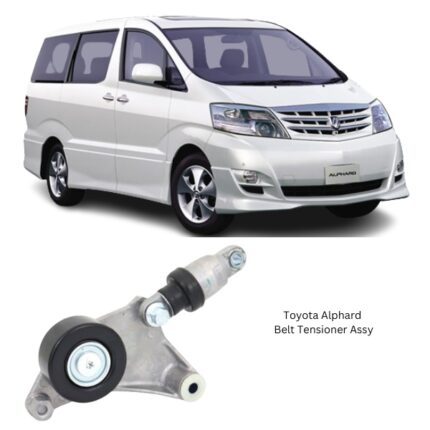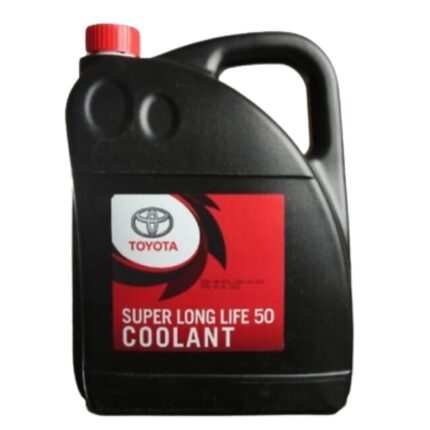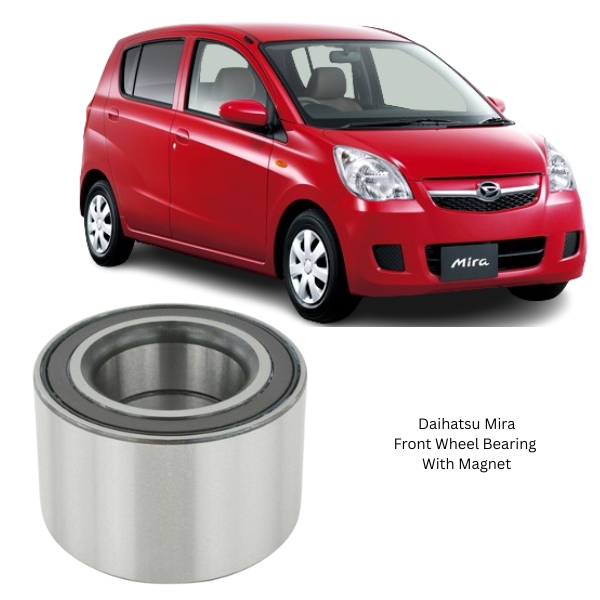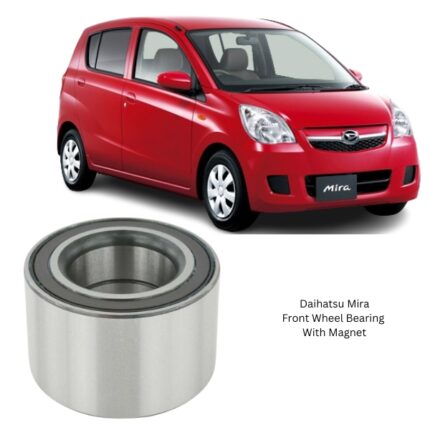Get Daihatsu Mira Front Wheel Bearing With Magnet DAC35640037M in Kenya
The Front Wheel Bearing with Magnet is a precision-engineered component designed to support the wheel’s rotational movement while also enabling integration with modern wheel speed sensing systems, most notably ABS (Anti-lock Braking System) and ESC (Electronic Stability Control). The addition of a magnetic encoder ring or magnetic strip within the bearing structure allows for accurate real-time speed detection without compromising the mechanical integrity or load-bearing performance of the bearing unit.
This combination of mechanical function and embedded sensor capability makes the Front Wheel Bearing with Magnet a vital part of both the wheel-end assembly and the broader vehicle control systems.
Primary Functions of the Front Wheel Bearing with Magnet
1. Load Support and Rotation
At its core, the wheel bearing carries axial and radial loads applied through the wheel hub, allowing the wheel to rotate freely with minimal friction. It supports both the vehicle’s static weight and the dynamic forces generated during acceleration, deceleration, cornering, and road impact.
2. Wheel Speed Signal Generation
The magnetic element incorporated into the bearing provides a signal source for wheel speed sensors. The embedded encoder ring interacts with a stationary sensor to produce a digital signal corresponding to wheel rotation. This is critical for systems such as ABS, traction control, and electronic stability programs.
Key Structural Components
The design of the Front Wheel Bearing with Magnet integrates advanced material technology and sealing mechanisms to ensure durability, precision, and sensor compatibility.
a. Inner and Outer Races
These rings house the rolling elements and form the structural core of the bearing. The inner race typically interfaces with the rotating wheel hub, while the outer race is fixed to the knuckle or suspension carrier. High-strength, heat-treated steel is used to provide resistance to wear and deformation under high loads.
b. Rolling Elements
Most commonly, ball or tapered roller bearings are used. These elements are guided within raceways and are crucial in minimizing rotational friction while bearing both radial and axial loads.
c. Cage (Retainer)
This component holds the rolling elements in uniform spacing and guides their movement within the races. It helps prevent contact between elements and reduces wear, vibration, and friction.
d. Seals
Dual-lip or triple-lip rubber or PTFE seals are integrated to protect the bearing internals from water, dust, and road debris while retaining the internal lubricant. In magnet-equipped designs, the seal on one side often integrates the magnetic encoder.
e. Lubrication
Pre-lubricated with high-performance grease, the bearing is sealed for life under normal operating conditions. The grease must withstand high temperatures, centrifugal force, and contamination.
f. Magnetic Encoder Ring
This is the defining feature of the magnetic wheel bearing. A strip or ring with alternating magnetic poles is bonded to the seal or integrated into the inner surface of the bearing. As it rotates, it induces a signal in the wheel speed sensor mounted close by.
Working Principle
As the wheel rotates, the entire bearing assembly rotates with it. The magnetic encoder rotates in sync with the wheel. The wheel speed sensor, usually a Hall-effect or magneto-resistive type, is fixed in close proximity to the encoder ring. As the alternating north and south magnetic poles pass by the sensor, it generates a voltage signal with a frequency proportional to the wheel speed.
This data is transmitted to the vehicle’s control modules, which use it to modulate braking force (in ABS), throttle (in traction control), or torque vectoring (in stability control).
Meanwhile, the rolling elements ensure low-friction, high-precision wheel rotation under varying load conditions.
Design Considerations for Optimal Performance
• Magnetic Cleanliness
The accuracy of the speed signal depends on the integrity of the magnetic encoder. Contamination with metal particles, excessive grease, or magnetic distortion can affect signal clarity. Therefore, the seal-integrated encoder is shielded from contaminants and precisely manufactured for uniform magnetic strength.
• Axial and Radial Load Capacity
The bearing must be designed to withstand combined forces from vertical vehicle weight and lateral cornering forces. Double-row angular contact or tapered roller designs are preferred for front wheel applications due to their balanced load-handling ability.
• Thermal Expansion Tolerance
The materials used in the inner and outer races, rolling elements, and encoder must have matched thermal expansion coefficients to maintain dimensional stability across a wide temperature range.
Common Applications of Embedded Magnet Bearings
-
Wheel Speed Sensing: Used by ABS and traction control modules.
-
Vehicle Dynamics Control: Feeds data to yaw control and stability management systems.
-
Adaptive Cruise Control (ACC): Assists in speed tracking and auto braking systems.
-
Torque Vectoring AWD Systems: Helps determine which wheel requires more torque.
Failure Modes and Symptoms
Despite being a sealed, maintenance-free unit, the Front Wheel Bearing with Magnet can suffer from degradation over time due to wear, contamination, or overload. Common failure indicators include:
-
Humming or Grinding Noise: Usually intensifies with vehicle speed and indicates bearing wear or damage.
-
ABS Warning Light: Triggered when the magnetic encoder fails or becomes unreadable by the sensor.
-
Inconsistent or Loss of Speed Signal: Can lead to erratic ABS or traction control performance.
-
Vibration or Play at the Wheel Hub: Often results from internal clearance issues due to worn-out races or rolling elements.
-
Grease Leakage or Seal Damage: Compromises bearing lubrication and exposes internals to debris.
In many cases, failure of the magnetic encoder will disable speed-related safety systems, making early detection and replacement essential.
Installation Considerations
Proper installation is critical to the bearing’s performance and lifespan. Key points include:
-
Sensor Orientation: The magnetic encoder must face the ABS sensor side. Installing it backward renders the speed sensing function inoperative.
-
Press Fit Accuracy: Excessive force or incorrect tooling can damage the encoder ring or deform the bearing structure.
-
Clean Environment: During installation, ensure no magnetic particles or ferrous debris are present to interfere with the encoder signal.
-
Torque Specifications: Fasteners used to secure the bearing and wheel hub must be torqued to OEM specifications to avoid misalignment or preload issues.
Post-installation, wheel speed signal calibration may be required on some vehicle systems.
Material and Technological Advancements
Modern Front Wheel Bearings with Magnets benefit from advanced materials and technologies, including:
-
Magnetic Multipole Encoders: Using advanced polymers embedded with ferrite for strong, stable magnetic signals.
-
Zero Maintenance Lubricants: Capable of operating over a wide temperature range without degradation.
-
Non-Contact Seals: Minimize friction while maximizing protection.
-
Low-Noise Bearing Geometry: Precision manufacturing techniques reduce NVH (Noise, Vibration, Harshness) characteristics.
These innovations extend service life, enhance driving safety, and ensure compatibility with evolving vehicle control architectures.
Follow us on Facebook for more parts.





Reviews
Clear filtersThere are no reviews yet.